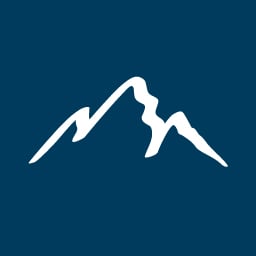A home equity line of credit (HELOC) is a popular way for homeowners to tap into the equity they have in their homes. These loans are different from traditional loans in several ways, and it’s important to understand how they work before you apply for one.
A significant aspect of a HELOC is the draw period. This is when you can access the funds through the HELOC. But what exactly is a HELOC draw period? Click here to learn more.
HELOC BASICS
Before we can move on to the draw period, it’s helpful to know a bit more about HELOCs.
How Do HELOCs Work?
When someone applies for a traditional loan, that person receives a lump-sum payment upfront and then repays it with monthly payments for a fixed period. The interest rate will be either fixed or variable, and collateral may or may not be needed.
HELOCs are different. A HELOC is a type of loan that operates like a credit card. Instead of receiving a lump-sum payment upfront, you get a line of credit that you can draw from as needed. After borrowing money with a HELOC, you can then replenish your credit limit by repaying it.
With a HELOC, the equity you have in your home serves as the collateral. The amount you can borrow is limited by how much home equity you have.
Finally, interest rates for HELOCs are usually variable. This is an important thing to consider if you think interest rates might go up sometime in the future.
What Can HELOCs Be Used For?
HELOCs can be used for many different purposes, and they usually have few or no restrictions. One popular use for HELOCs is home improvement projects.
If you are remodeling your kitchen, for example, you could borrow some money to buy tools and building materials, repay it, and then borrow some more money later when you need to purchase more supplies.
In addition to home improvement projects, a few things a HELOC can be used for include:
- Medical expenses
- A wedding
- Furniture
- Appliances
- Home decorations
Some people also establish HELOCs as emergency backups. They have a line of credit available for emergencies, but they don’t have to draw money from it when it’s not needed.
HOW DO HELOC DRAW PERIODS WORK?
One of the most distinctive features of HELOCs is the draw period. This is the period that your line of credit is open and you can borrow money. Each lender will have its policies on the length of their draw periods, but they are usually 10 years.
During the draw period, you can borrow money, repay it, and then draw more money. You can do this as often as you like as long as you don’t exceed the credit limit.
One thing about HELOCs that is very different from traditional loans is that you also have the option to make interest-only payments during the draw period. You can’t do this forever, of course. The principal will be due when the HELOC ends.
If you have not repaid the money you borrowed when the draw period ends, a balloon payment may be required where you will have to repay the full amount. Depending on your lender, it may be possible to roll the outstanding balance into a new loan so that you can repay it with monthly installments and a fixed interest rate.
HOW TO PREPARE FOR THE END OF THE HELOC DRAW PERIOD
With its long draw period, it’s easy to forget that a HELOC will eventually end. However, if you plan carefully, it won’t come as a surprise when it happens. You can make preparations to start repaying any outstanding money long before the draw period ends to avoid having to deal with a balloon payment.
Know When the Draw Period Ends
Keeping up with the date that your HELOC ends is the easiest way to avoid surprises. The documentation your lender provides when you open a HELOC includes details about the loan, the end date, and other important information.
Instead of filing this documentation away and forgetting about it, take the time to review it. Your lender will be able to assist you with any questions you may have. Make a note of the end date and keep it in a conspicuous place to help you remember it.
Watch for Notifications From Your Lender
When the end of your HELOC draw period is approaching, your lender will send notifications to you by mail. Be sure to open and read any correspondence from your lender since it could be something important.
Contact Your Lender
If you are unsure when your HELOC draw period will end, or if you have any other questions about your loan, contact your lender and ask. A quick phone call can help to clarify things.
Plus, if you know you will still have a balance when your HELOC ends, you can use this opportunity to talk to your lender about your options to pay it off.
Be Mindful of Your Budget
When your HELOC draw period ends, you will no longer be able to draw money. Because of this, it’s important to update your budget to make sure you can handle your expenses.
If you are using your HELOC as an emergency backup, for example, you could start building an emergency fund several months in advance to replace it. If you are using a HELOC for a home remodeling project that isn’t complete, you may need to trim some things from your budget to finish the work.
HELOC AND HELOC DRAW PERIOD: IS IT FOR YOU?
HELOCs are highly versatile loans that can be used for many different purposes. They have many benefits over other loan options including interest-only payments during the HELOC draw period. Depending on your needs, having a line of credit instead of a traditional loan may make more sense.
Some also consider using HELOCs to consolidate their debt. But is this a good idea? Check out the following article to learn more about whether HELOCs are a good option for debt consolidation.



